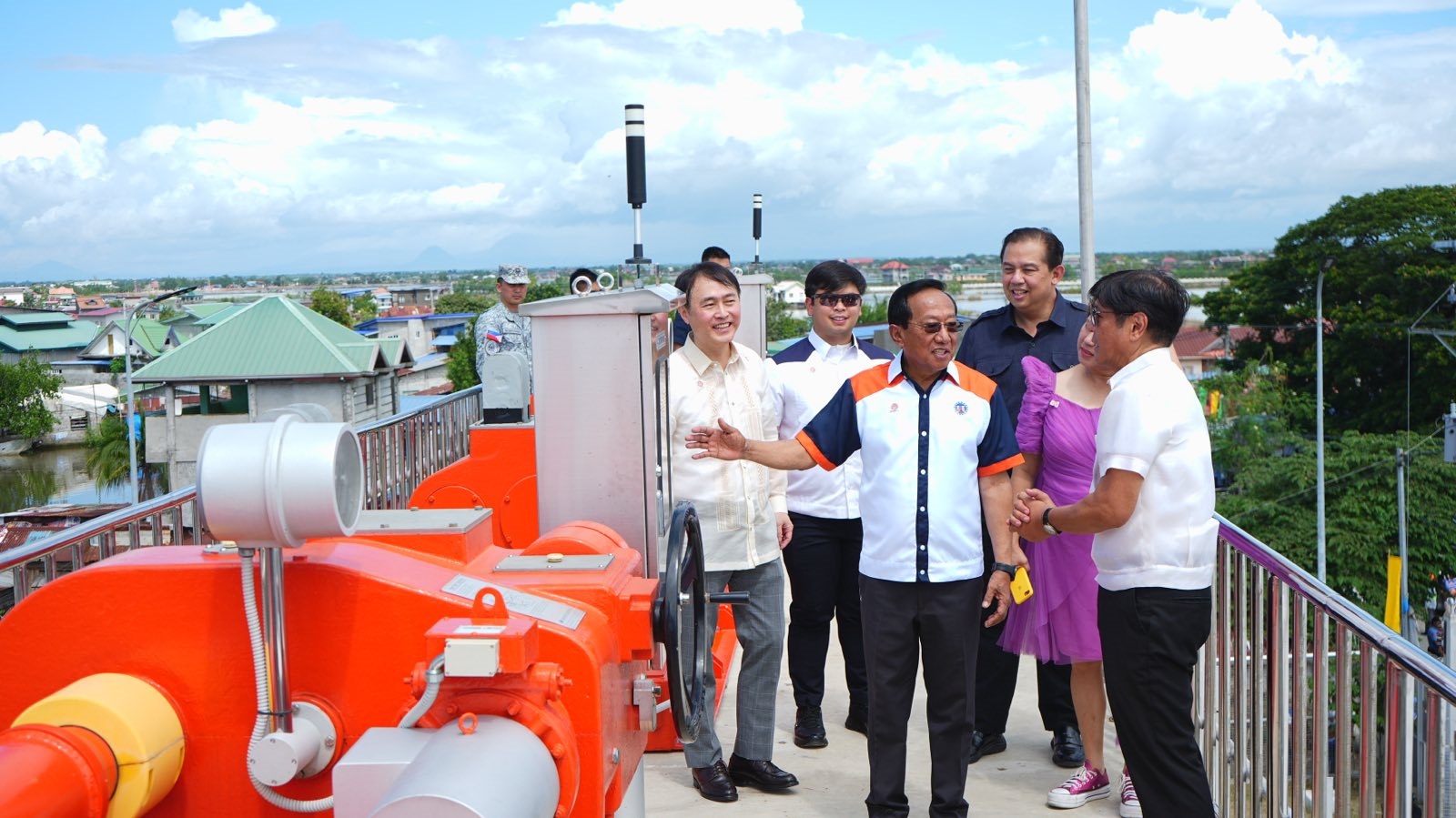
President Ferdinand R. Marcos, Jr., on Wednesday, August 7, 2024, led the inauguration of the Integrated Disaster Risk Reduction and Climate Change Adaptation (IDRR-CCA) Measures in Low-Lying Areas of Pampanga Bay - Stage I completed by the Department of Public Works and Highways (DPWH) in the Province of Pampanga.
The President was joined by House Speaker Ferdinand Martin G. Romualdez, DPWH Secretary Manuel M. Bonoan, Korean Ambassador to the Philippines Lee Sang-Hwa, Pampanga Governor Dennis G. Pineda, 4th Congressional District Representative Anna York P. Bondoc and Representative Jorge Bustos of Patrol Partylist in the inauguration of the completed flood mitigation project that will improve resilience and protection during typhoon seasons for the towns of Macabebe, Masantol, Minalin, and Sto. Tomas.
Implemented by the DPWH Unified Project Management Office – Flood Control Management Cluster under the leadership of Senior Undersecretary Emil K. Sadain and Project Director Ramon A. Arriola III, the ₱7.57 Billion detailed design and construction of Integrated Disaster Risk Reduction and Climate Change Adaptation (IDRR-CCA) Measure in Pampanga was funded through the Official Development Assistance (ODA) from the Republic of Korea under Loan Agreement No. PHL-17 with the Korean Economic Development Cooperation Fund (KEDCF).
The inauguration event at Sapang Maragul Sluice Gate in Brgy. Bebe Anac, Masantol, Pampanga, was also attended by DPWH Senior Undersecretary Emil K. Sadain; Regional Office III Director Roseller A. Tolentino; Project Directors Ramon A. Arriola III, Benjamin A. Bautista, Teresita V. Bauzon, Soledad R. Florencio, Rodrigo I. Delos Reyes; and Stakeholders Relations Service Director Randy R. Del Rosario.
In his message, President Marcos instructed the DPWH to ensure that the second stage of the project, also financed by the Republic of Korea, would proceed as scheduled to fully realize the project’s benefits and provide long-term solutions to flooding in Pampanga.
Secretary Bonoan highlighted in his project briefing the significance of the IDRR-CCA, stating that it will substantially reduce flood risks and enhance the resilience of the affected areas.
The project will improve the waterway capacity and the drainage efficiency of the river channel networks in Pampanga, including the Third River, the Eastern Branch Channel, the Caduang Tete River, and the Sapang Maragul River, that all flows to the Pampanga Bay.
Included in the civil works are dredging, excavation, and embankment works of the subject rivers, increasing their discharge capacity, and thus reducing massive flooding to the susceptible areas.
Furthermore, IDRR-CCA also covers the construction of three (3) bridges, five (5) footbridges, six (6) sluice gate structures, and 164 fish pond gates, primarily designed to strengthen the flood control interventions and uplift the local infrastructure in the region.
By improving the river network and flood control infrastructure, the project aims to provide relief to communities that have historically suffered during typhoon seasons, fostering a more stable and prosperous environment, said Secretary Bonoan.
The updating of integrated flood management master plan, feasibility study and detailed engineering design of Lower Pampanga River Basin covering Pampanga Delta Development Project Phase II is on-going under the Philippines – Korea Project Preparation Facility – Flood Control Output, Secretary Bonoan added.
According to Senior Undersecretary Sadain, in-charge of DPWH infrastructure flagship projects under the “Build Better More” program, the administration is working on the financing agreement with the Asian Development Bank (ADB) for the detailed engineering design for Central Luzon - Pampanga Floodway and San Antonio Swamp Ring Dike Project, as a long term solution against flooding which will benefit Pampanga, Bulacan, and Nueva Ecija.
The Central Luzon - Pampanga Floodway and San Antonio Swamp Ring Dike Project, which will run from the foot of Mount Arayat is expected to dispose of flood waters coming from the Upper Pampanga River catchment directly to the mouth of Manila Bay by building a 100-year flood design floodway channel of about 60-kilometer long by 400-meter wide.
Meanwhile, DPWH projects to mitigate flooding in Metro Manila includes construction and improvement of pumping stations along critical waterways under the Metro Manila Flood Management Project and Pasig-Marikina River Channel Improvement Project - Phase IV including construction of Marikina Control Gate Structure.
An Upper Marikina Dam of about four (4) kilometer upstream from the existing Wawa Dam in Montalban Gorge and a retarding basin downstream of Marikina River Basin are also proposed to help reduce peak river flows entering Greater Metro Manila during typhoons and extreme rainfall events with a 100-year return period, ensuring safe conveyance of the remaining floodwaters through Metro Manila without causing significant flooding, said Senior Undersecretary Sadain.
The DPWH is also proposing the construction of Parañaque Spillway Tunnel Project, which is a muchly needed engineering intervention based on comprehensive flood management plan that is supported by the Japan International Cooperation Agency (JICA) surveys to address extreme flooding by draining excess water from the Laguna Lake into Manila Bay through an underground drainage channel about 50 meters below underground the cities of Muntinlupa, Parañaque, Las Piñas, and Bacoor City in Cavite and will avoid spilling of lake water into low-lying communities, added Senior Undersecretary Sadain.
